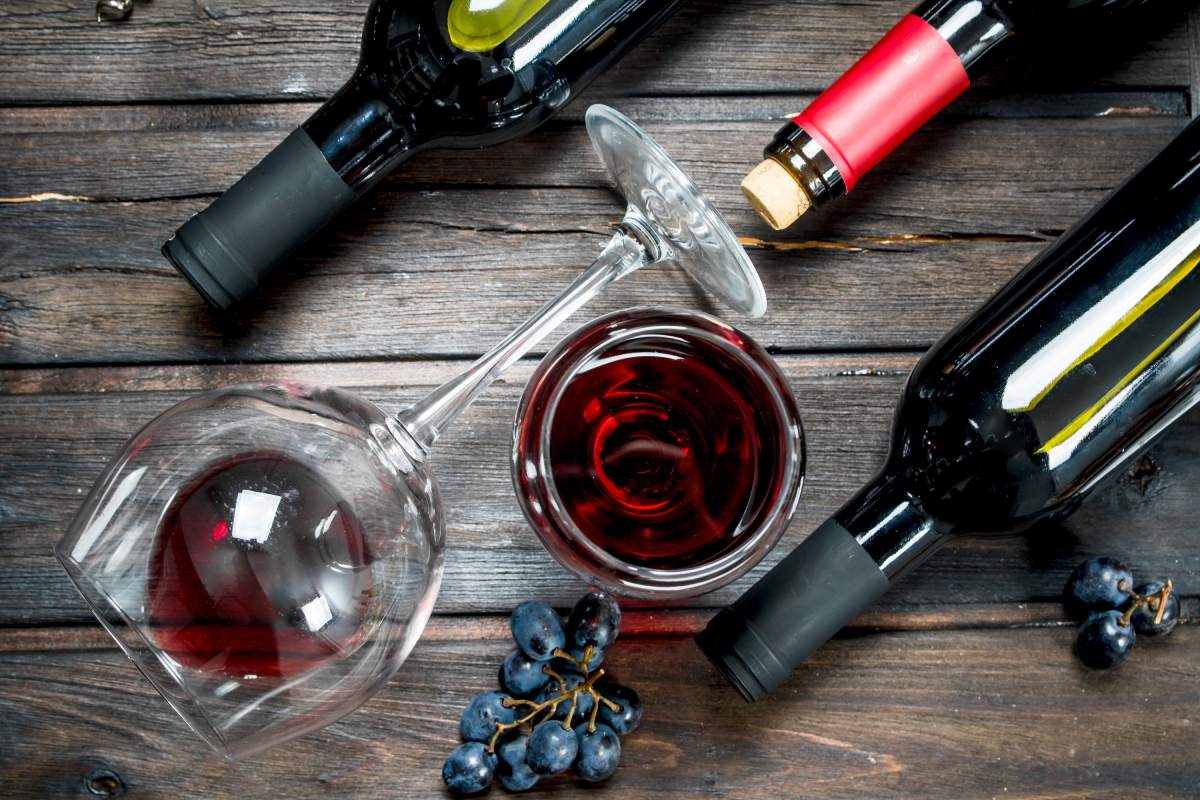Should Red Wines and White Wines Be Stored the Same?
Wine lovers know that both red and white wines offer unique flavours and experiences, but did you know that how you store your wine can significantly impact its taste?
Whether you’re a casual drinker, a dedicated collector or receiving from your friends as your birthday present and don’t even know when you’re gonna finish all of that, understanding the different storage needs of red and white wines is essential to preserving their quality.
This guide will walk you through the key differences in how to store red and white wines, ensuring that every bottle you open is at its best.
How Many Types of Red Wines?
Red wine is a beloved drink enjoyed by people all around the world, and it comes in many different types. If you’re new to the world of red wine or just curious about the different varieties, here’s a guide to help you understand the most popular types of red wines.
1. Cabernet Sauvignon
Cabernet Sauvignon is one of the most popular and widely recognized red wines. It originates from the Bordeaux region of France but is now grown all over the world.
Cabernet Sauvignon wines are known for their deep, rich flavours of blackcurrant, black cherry, and hints of green pepper or spice. They are often full-bodied, meaning they have a strong, bold flavour, and they can age well, often developing more complex flavours over time.
2. Merlot
Merlot is another well-known red wine, also from Bordeaux. It’s a bit softer and smoother than Cabernet Sauvignon, making it a great choice for those who prefer a less intense wine. Merlot typically has flavours of plum, black cherry, and chocolate. It’s versatile and pairs well with a variety of foods, from grilled meats to pasta dishes.

3. Pinot Noir
Pinot Noir is a lighter red wine with a delicate, silky texture. It originates from the Burgundy region of France and is known for its bright, red fruit flavours like cherry, raspberry, and strawberry, often with earthy undertones.
Pinot Noir is often lighter in colour and body compared to other red wines, making it a great choice for those who prefer a more subtle and refined taste.
4. Syrah/Shiraz
Syrah and Shiraz are actually the same grape variety, but the name changes depending on where it’s grown. In France, it’s known as Syrah, and in Australia, it’s called Shiraz. This wine is bold and spicy, with flavours of dark fruits like blackberry, along with pepper, chocolate, and sometimes a hint of smokiness.
Shiraz is especially popular in Australia, where it’s known for its rich, full-bodied flavour.
5. Zinfandel
Zinfandel is a versatile red wine that’s grown primarily in California. It’s known for its bold fruit flavours, such as blackberry, raspberry, and plum, often with spicy or peppery notes. Zinfandel can range from lighter, fruity wines to more robust, full-bodied ones. It’s a great wine to enjoy with a barbecue or spicy dishes.
6. Malbec
Malbec is originally from France but has become Argentina’s signature red wine. It’s known for its deep, dark colour and rich, fruity flavours of black cherry, plum, and blackberry, often with hints of chocolate or coffee. Malbec wines are usually full-bodied and have a smooth, velvety texture.
7. Sangiovese
Sangiovese is the most widely planted grape in Italy and is the main grape used in Chianti wines. It’s known for its bright, cherry flavours and earthy, herbal notes. Sangiovese can vary in style from light and fresh to more full-bodied and complex. It’s a great match for Italian dishes like pasta and pizza.
8. Grenache
Grenache is a popular red wine grape grown in Spain and France, known for its ripe, red fruit flavours like strawberry and raspberry. It often has a slightly higher alcohol content and a rich, warm finish. Grenache is often used in blends but can also be found as a single-varietal wine.

How Many Types of White Wines?
White wine is enjoyed worldwide and offers a diverse range of flavours, styles, and characteristics. If you’re exploring the world of white wines or simply curious about the different types, here’s a guide to some of the most popular varieties.
1. Chardonnay
Chardonnay is one of the most well-known and widely grown white wine grapes in the world.
Originating from the Burgundy region of France, Chardonnay is incredibly versatile and can produce a range of styles. You’ll find everything from crisp and refreshing unoaked Chardonnays with flavours of green apple and citrus to rich and buttery oaked versions with notes of vanilla and tropical fruits.
Chardonnay is often full-bodied and can pair well with a variety of foods, from seafood to chicken and creamy sauces.
2. Sauvignon Blanc
Sauvignon Blanc is a zesty and aromatic white wine known for its vibrant acidity and refreshing qualities. Originating from the Loire Valley in France, it’s now widely grown in regions like New Zealand, where it produces some of the most famous examples.
Sauvignon Blanc typically has flavours of lime, green apple, passion fruit, and sometimes grassy or herbal notes. It’s a great wine to enjoy on a warm day and pairs well with salads, seafood, and goat cheese.
3. Riesling
Riesling is a highly aromatic white wine that can range from bone dry to very sweet. Originally from Germany, Riesling is known for its high acidity and flavours of green apple, peach, and lime, often with a characteristic floral or mineral note.
Even the driest Rieslings tend to have a touch of sweetness, making them a perfect match for spicy foods, especially Asian cuisine. Sweet Rieslings are delightful with desserts or as a stand-alone treat.
4. Pinot Grigio/Pinot Gris
Pinot Grigio and Pinot Gris are actually the same grape variety, but the style of wine they produce can be quite different depending on where it’s grown. Pinot Grigio, primarily from Italy, is typically light, crisp, and refreshing with flavours of lemon, green apple, and pear.
Pinot Gris, often from France’s Alsace region, tends to be richer and fuller-bodied with flavours of peach, honey, and spices. Both are excellent choices for a summer day and pair well with light dishes like salads and seafood.
5. Chenin Blanc
Chenin Blanc is a versatile white wine grape that originates from the Loire Valley in France. It can be made into a wide variety of styles, from dry and sparkling to sweet dessert wines.
Dry Chenin Blanc wines often have flavours of green apple, pear, and honey, with a crisp acidity. Sweet versions are rich and luscious, with flavours of apricot and quince. Chenin Blanc pairs well with a wide range of foods, including poultry, pork, and creamy dishes.
6. Gewürztraminer
Gewürztraminer is a distinctive and aromatic white wine known for its bold flavours and floral bouquet. Originating from Germany and Alsace, France, Gewürztraminer has flavours of lychee, rose, and tropical fruits, often with a hint of spice.
It’s usually medium to full-bodied with a slightly sweet taste, making it a great pairing for spicy foods, especially Indian and Thai cuisine.
7. Moscato
Moscato is a sweet, aromatic white wine made from the Muscat grape. It’s known for its fragrant bouquet and flavours of peach, orange blossom, and apricot. Moscato is usually light in alcohol and has a refreshing sweetness, making it a popular choice for dessert or as a light, fruity aperitif. It pairs well with fruit-based desserts, cheese, and spicy dishes.
8. Viognier
Viognier is a rich and aromatic white wine originating from the Rhône Valley in France. It’s known for its lush flavours of peach, apricot, and honeysuckle, often with a creamy texture. Viognier is typically full-bodied and pairs well with roasted chicken, pork, and dishes with rich, creamy sauces.

Should Red and White Wines Be Stored the Same?
Red wines and white wines have different characteristics and should be stored slightly differently to preserve their quality and flavour. Here’s a guide to understanding how to store each type of wine properly.
1. Temperature
- Red Wines: Red wines are best stored at a slightly warmer temperature than white wines. The ideal storage temperature for red wines is between 12°C and 18°C (55°F to 65°F). If red wine is stored too warm, it can age prematurely and lose its flavour. On the other hand, if it’s stored too cold, the flavours might become muted.
- White Wines: White wines should be stored at a cooler temperature, ideally between 7°C and 13°C (45°F to 55°F). Cooler temperatures help preserve the fresh, crisp flavours that white wines are known for. Storing white wines too warm can cause them to lose their vibrancy while storing them too cold can dull their flavours.
2. Humidity
Both red and white wines should be stored in a place with moderate humidity, ideally around 70%. This helps to keep the cork moist, preventing it from drying out and allowing air to enter the bottle, which could spoil the wine. If the humidity is too high, it could encourage mould growth, and if it’s too low, it could dry out the cork.
3. Light
Wine, whether red or white, should be kept away from direct sunlight and strong artificial light. Light can degrade wine, leading to what’s known as “light strike,” where the wine develops off-flavours. A dark, cool place like a wine cellar or a wine refrigerator is ideal for storing both types of wine.
4. Position
Wine bottles should be stored on their sides, whether they are red or white. Storing bottles horizontally keeps the wine in contact with the cork, which prevents the cork from drying out and shrinking.
This is especially important for wines with natural corks, as a dried-out cork can let in air and spoil the wine. If the bottle has a screw cap or synthetic cork, this is less of a concern, but side storage is still generally recommended.
5. Stability
Wine doesn’t like to be shaken or moved around frequently, as vibrations can disturb its ageing process. Whether red or white, wines should be stored in a stable environment, away from appliances that generate vibrations, like refrigerators or washing machines. A quiet, undisturbed spot is best.
6. Long-Term vs. Short-Term Storage
- Red Wines: Many red wines can benefit from ageing, so they are often stored for longer periods. If you plan to store red wine for several years, maintaining a consistent, cool temperature is crucial. Some reds, like Cabernet Sauvignon or Bordeaux, can improve significantly with age.
- White Wines: Most white wines are meant to be enjoyed young and fresh, so they typically aren’t stored for as long as red wines. However, some white wines, like Chardonnay or Riesling, can also benefit from ageing. For short-term storage, a regular refrigerator can work for white wines, but for long-term storage, a wine fridge set to the appropriate temperature is ideal.
Conclusion
Storing wine properly is key to enjoying its full potential, whether it’s a robust red or a crisp white. While both red and white wines share some basic storage principles—like maintaining the right humidity and keeping them away from light—they each have specific needs when it comes to temperature and long-term ageing.
If you’re a wine enthusiast with a growing collection, why not try Keep It climate control storage? They offer full security options, including 24/7 CCTV, security guards, and key card access, so you can rest assured that your wines will be kept at the right temperature and humidity without cluttering your house.
So next time you bring home a bottle, take a moment to store it correctly—you’ll taste the difference.



